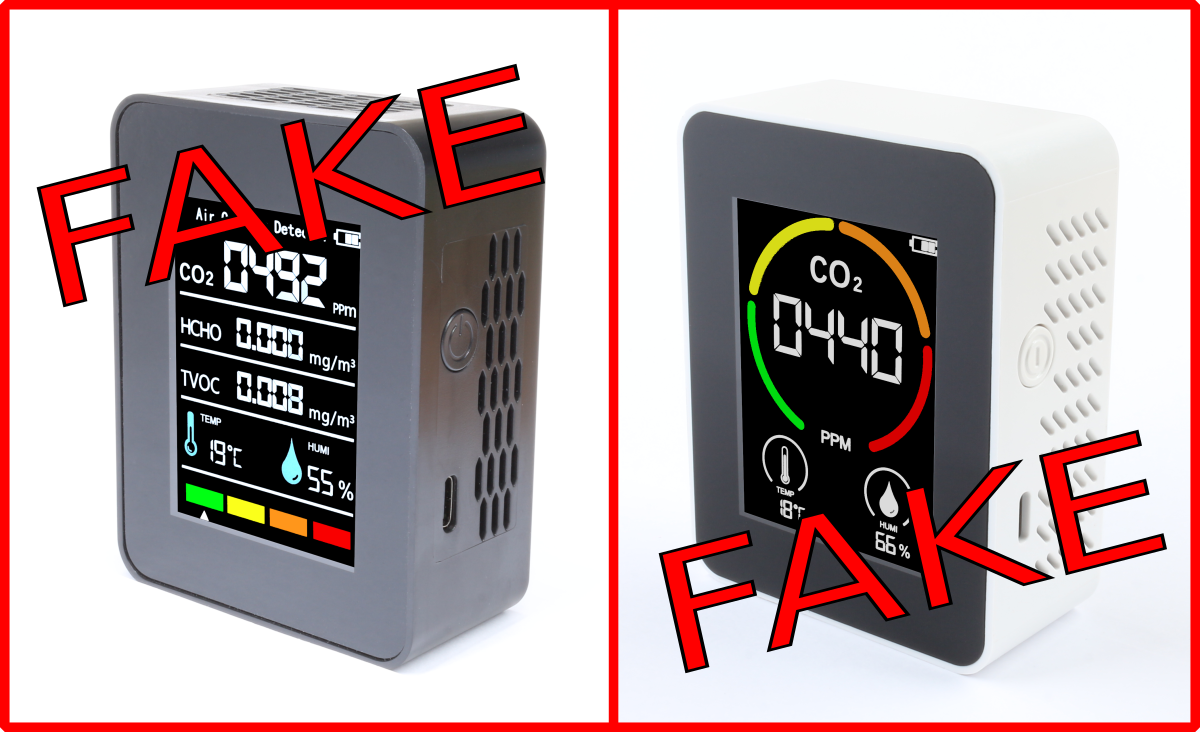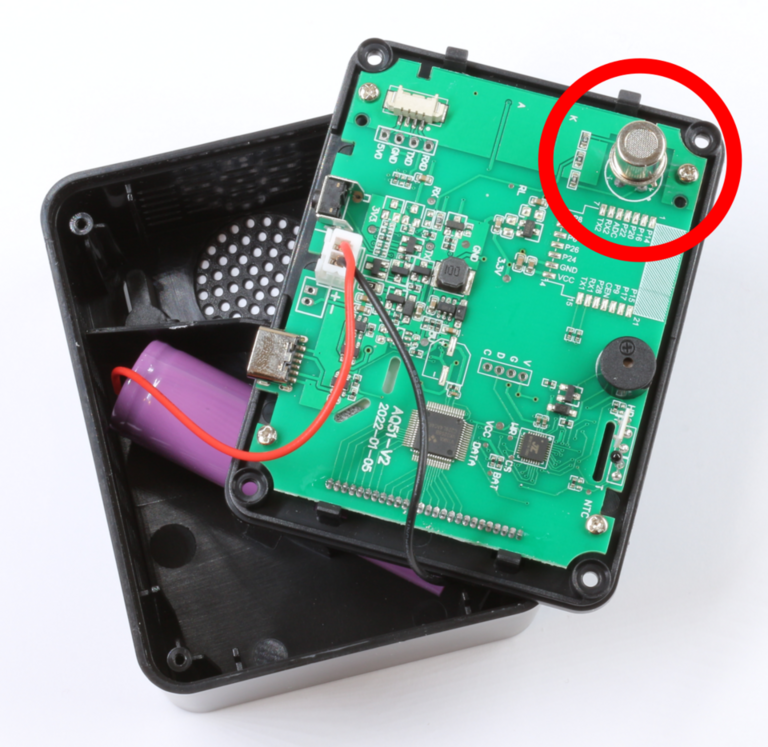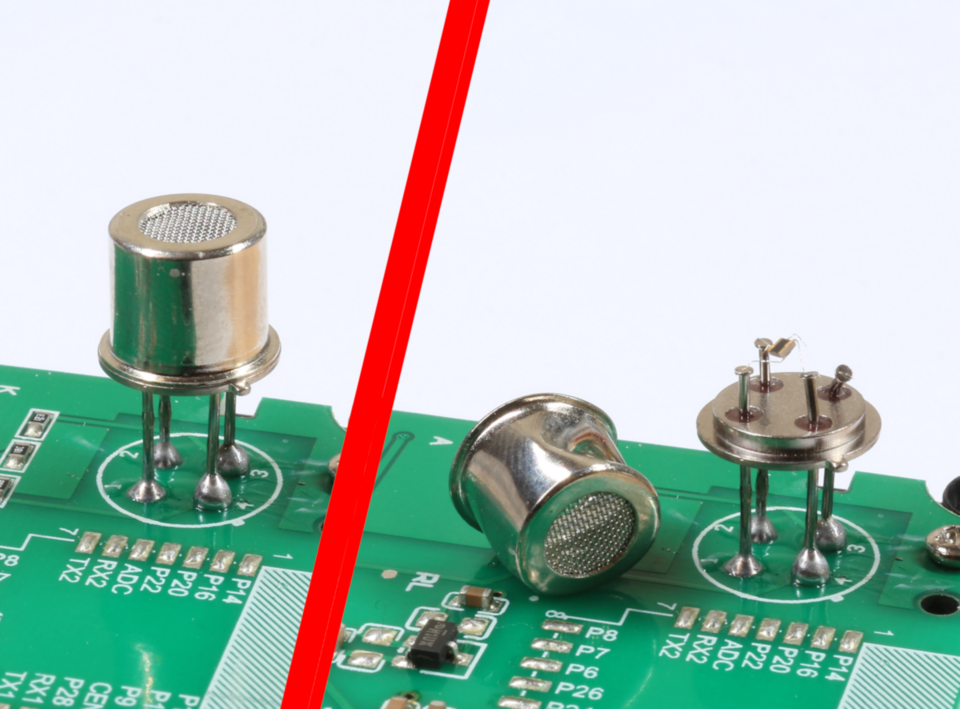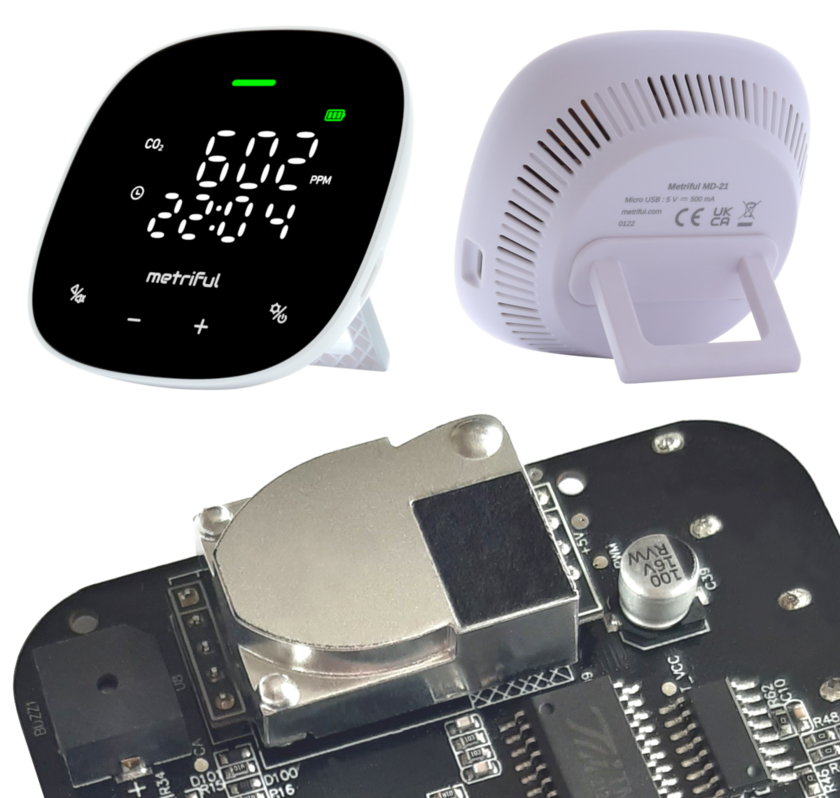Fake Monitors
Thousands of people across Europe have bought "CO2 monitors" which cannot detect CO2.
These fake monitors are still widely available to buy online. In this article, we explain more about these fraudulent products.

Typical appearance
The fakes are usually unbranded and may lack legally required information, such as a CE/UKCA mark or manufacturer's name.
They are generally low in price (less than £30) and often look similar to the examples shown here.

Checking the sensor
The vital part of an air quality monitor is its internal sensor component.
Opening the fakes reveals the sensor component to be a simple, cheap VOC sensor.
As we explain below, this cannot possibly detect CO2. Selling these devices as CO2 monitors is fraudulent.

What is a VOC sensor?
Volatile organic compounds (VOCs) are a large class of airborne impurities. Common VOCs include solvents, perfumes and other odour-causing chemicals.
VOC sensors contain a tiny electric heater. Chemical reactions between VOCs and the heated sensor surface create a measurable signal.
This technology may also use names like: TVOC, silicon, semiconductor, MOx, MOS.
What are the problems with VOC sensors?
- They cannot detect CO2 because it does not chemically react with the heated VOC sensor.
- They are non-specific: they respond to hundreds of substances, including water vapour and alcohol, but do not identify which is present.
- They cannot measure the quantity of impurity present, but only whether it is increasing or decreasing.

Our CO2 monitor uses an NDIR sensor
NDIR (Non-Dispersive Infrared) sensors are the best technology for compact and accurate consumer CO2 measurement.
They detect the absorption of a specific wavelength of infrared light as it passes through a sample of air. This is the same principle used in scientific laboratory analysis of CO2.
We use an industry-leading NDIR sensor in our MD-21 monitor.
Have you bought a fake?
Find out with our simple method to test a CO2 monitor.
